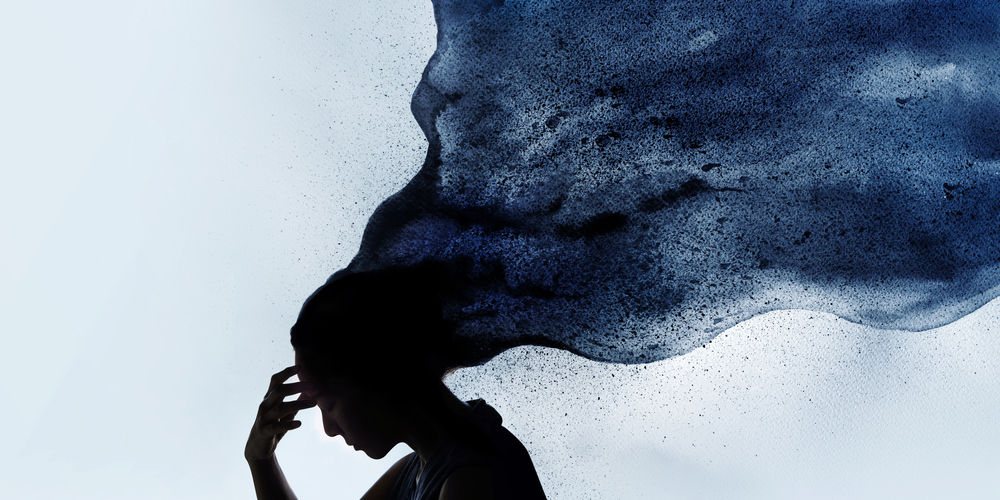Self-harm - what it is and how to cope
Posted on 5th June 2022 at 14:42
Self-harm - what it is and how to cope
Trigger Warning: Please be aware that this content may be triggering for those experiencing mental ill health or struggling with their emotions.
Through our parent support group and interactions with the local community, it has become apparent that self-harm is a big issue for many of our young people. Here, we will discuss what self-harm is and how individuals who self-harm can be supported.
Around one in ten young people have been found to self-harm and this only takes into account those who have presented at healthcare settings - the issue is likely to be much more widespread. Issues such as self-harm can often be misunderstood and feel overwhelming for those who experience it and their family and friends.
What is self-harm?
Self-harm is often a way of coping with feelings and situations which individuals feel they have no control over. It can be a way to:
• Express feelings that are difficult to put into words
• Make invisible thoughts and feelings more visible
• Reduce the distress of overwhelming thoughts or feelings
• Get a feeling of being in control
• Punish themselves for thoughts, feelings or experiences
• Express suicidal thoughts without making an attempt to take their life
Self-harming can provide a short-term release and feeling of well-being, but this in turn, can lead to repeated self-harming behaviour as it does not tend to last long. It can sometimes be difficult for someone to stop self-harming as they can become dependent upon the feeling of wellbeing it can provide.
Who self-harms?
A wide range of people who are experiencing emotional difficulties may self-harm, and there is no one profile of someone who self-harms. However, there are certain groups of people who are more likely to experience self- harm, including:
• Young people
• Members of the LGBTQ+ community
• Asylum seekers, prisoners and veterans
• People with a mental health problem
• People who have experienced abuse or trauma as a child
• Women and girls
However, it is important to note that self-harming in itself is not necessarily indicative of mental illness, and is often a way of dealing with extreme distress or overwhelming emotions.
Why self-harm?
Many people self-harm as a result of long-term feelings of distress or difficult situations. They may self-harm because they are depressed, they have friendship or relationship issues, they have been abused or are experiencing difficulties at work or school.
Self-harm is more common when someone feels hopeless or helpless, or that they are isolated and that no-one understands them. Feelings of powerlessness may also make it more likely for someone to self-harm.

What does self-harm look like?
Self-harm can include a range of behaviours but most commonly includes:
• Cutting
• Scratching
• Head banging
• Burning themselves
• Swallowing foreign objects
• Attempted suicide
However, self-harm can also include behaviours such as abusing drugs or alcohol, having unsafe sex, restricting food intake or bingeing and vomiting, such as with eating disorders.
Self-harm is rarely a sign that a person genuinely wants to take their own life, but those that self-harm are more likely to attempt suicide. It is also not a ‘cry for help’ or a way of ‘attention seeking’.
Where to get help
You can get help from a variety of sources when you have self-harmed or are feeling like you want to self-harm. There are helplines such as Samaritans 116 123 or you can text Shout on 85258 if you are in crisis or if you just need someone to listen to you.
You can also attend your local A&E service, particularly if you have wounds that need treating. A&E departments are well-staffed with people who understand and have experience of helping those who have self-harmed and will not judge you in any way. They should also be able to provide access to psychiatric or emotional support. If you are not sure where to find help, you can call 111 for further advice.

Self-help
There are many ways that people can help themselves when they have the urge to self-harm. These include a variety of distraction techniques, which may work for different people in different situations.
These include:
• Exercise or going for a run
• Tearing things like paper into little pieces or punching a cushion
• Singing or dancing
• Spending time with a pet or going for a walk in nature
• Wrapping yourself in a blanket
• Listening to music
• Holding ice cubes
• Flicking elastic bands in your wrists
No one thing will be helpful for everybody or for every situation - having a ‘toolbox’ of helpful distractions is a good way of finding something that helps when the urge to self-harm occurs.
How to support someone who has self-harmed

It can be scary when you find someone has self-harmed, particularly if that person is a child or young person or if their injuries are serious. Here are some top tips for supporting them:
• Stay calm - try not to panic
• Try to give the person choices and control over how they would like to be supported – ask things like ‘What can I do to help you right now?’
• Seek medical help – if the injuries need treating, use first aid or go to a minor injuries or A&E unit - encourage the person to attend, or to have the wounds treated. They may be reluctant or frightened, so try to reassure them that they are not being judged and that they deserve medical attention.
• Try to listen – remember, self-harm is often a result of someone experiencing overwhelming feelings or feeling that they are not understood.
• Try not to be judgemental and treat the person as a whole person, not just their self-harm
• Communicate honestly and sensitively – take responsibility for your own feelings.
• Think about removing objects that can be used to cause harm, such as sharp objects, medications etc. Where possible, discuss this with the person who has self-harmed, explaining that you want to help them to keep themselves safe.
• Let them know you are there for them, even if they don’t want to talk.
There can be many reasons why a person has self-harmed and, although it can be frightening, staying calm and trying to listen and to understand will help them to find ways of dealing with how they are feeling.
If you are someone who feels like you want to self-harm, there are lots of agencies and helplines who are there to support you. You can find the links to a wide range of help in this blog post and on the Y:AMHS website. Please don’t be afraid to reach out – you are not alone and you will not be judged.
If you would like further advice on how to support someone who has self-harmed, please see the links in this blog post or email gethelp@yamhs.co.uk.
Together, we can #changethestory
Share this post:








